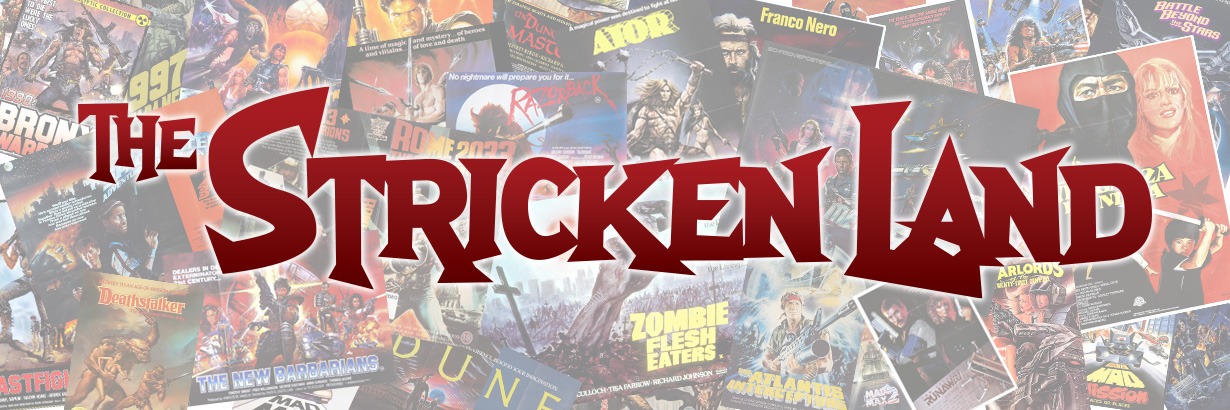
England’s Screaming – A Fictional History of UK Horror Cinema.
Sean Hogan
306 pages PS Publishing 2019
Shared universes are all the rage in cinema now, the Marvel Cinematic Universe (MCU) probably being the most well known and commercially successful. Indeed this goes back to roots of the Silver Age of American comic books back in the 1960’s when Marvel Comics and DC first began to cross over their characters into each other’s stories.
But the idea of a shared universe and chronology in modern entertainment goes back further than this and was first pioneered (albeit by a cynical cash-in motive, rather than any creative impulse), by Universal’s ‘Monster cycle’ films that began with Tod Browning’s classic DRACULA in 1931 starring the Hungarian actor Bela Lugosi, reprising his successful Broadway role for the then burgeoning silver screen. The huge success of this film and its follow up, James Whale’s FRANKENSTEIN in the same year, saw a whole slew of horror films produced by Universal, sometimes based on literary sources (THE PHANTOM OF THE OPERA, THE INVISIBLE MAN), sometimes not (THE MUMMY, THE WOLF MAN). The success of these films prompted inevitable sequels where Universal brass hit on the idea of having two or more of their ‘monster’ properties in the same film, reasoning that more monsters would equal increased returns at the box office (FRANKENSTEIN MEETS THE WOLF MAN, HOUSE OF FRANKENSTEIN, HOUSE OF DRACULA), an approach that the contemporary horror screenwriter and producer Val Lewton derided as ‘monster mash’. The inevitable law of diminishing returns kicked in soon enough though, with some truly risible efforts that introduced the comedy duo Abbott & Costello in the monster cycle in an attempt to wring every last dollar out of the properties. THE CREATURE FROM THE BLACK LAGOON signalled a brief return to the genre, spawning two sequels, but no serious attempt was made (thankfully) to cross over the titular ‘Gill-Man’ with Universal’s more gothic tinged monster properties.
But the principle of having different characters in different films sharing the same chronology and ‘world’ had been established, even if the concept was largely forgotten by Hollywood in the ensuing decades.
Which brings us to the subject of this review, a book whose central premise is so beautifully simple, subtle and elegant in its execution that any fan of postwar British horror cinema will be kicking themselves that they didn’t think of it first.
Imagine that Damien Thorn from THE OMEN was connected to the Duc du Richlieau from THE DEVIL RIDES OUT through Julian Karswell from NIGHT OF THE DEMON. Author Sean Hogan’s book deftly weaves these characters and numerous others from cinema and TV, both famous and obscure into a wonderful tapestry that will have not just horror fans but cinephiles in general turning the pages in anticipation of travelling further down Hogan’s ingeniously constructed rabbit hole.
But this isn’t just a contrived dot connecting exercise, seeking to link together over six decades worth of the British horror genre. As with most shared universes, Hogan places everything in the context of an overarching story, in this case the existential power struggle between the dark messianic zeal of the Antichrist Damien Thorn and the contemptuous nihilism of the psychic John Morlar from the 1978 chiller, THE MEDUSA TOUCH.
Each chapter focuses on a film character, ingeniously linking them to each other and the overall arc. For example, we have Carol Ledoux (REPULSION) committed to a mental institution after the events of that film, which just happens to be run by a certain Dr Channard (HELLRAISER II). Other highlights (too many to mention without getting into spoiler territory) include a genius thread linking the infamous 1973 public information film THE SPIRIT OF DARK AND LONELY WATER with the Nicolas Roeg classic DON’T LOOK NOW, Peckinpah’s STRAW DOGS with THE LEAGUE OF GENTLEMEN (I shit you not), and a particularly enjoyable chapter on Gilderoy, the main protagonist of Peter Strickland’s surrealist love letter to Euro exploitation cinema BERBERIAN SOUND STUDIO.
Hogan doesn’t leave many stones unturned in constructing his fictional universe, and it’s a real joy to read his extra background material linking together characters like Professor Bernard Quatermass with obscure cameo parts such as Christopher Lee’s turn as the enigmatic Stratton-Villiers (DEATH LINE) which the author also seamlessly links to Peter Walker’s 1974 schlock-fest FRIGHTMARE. Along the journey, the book introduces the reader to long forgotten entries like THE GODSEND and the little known Edward Woodward vehicle THE APPOINTMENT, taking the narrative all the way to the present incorporating titles such as Shane Meadows’ DEAD MAN’S SHOES. THE BORDERLANDS and Matthew Holness’ POSSUM, all the while giving nods to non horror classics line GET CARTER, THE SERVANT and THE LONG GOOD FRIDAY.
ENGLAND’S SCREAMING is the best book on British horror and on cinema in general that I’ve read in years. With a whip smart conceit at its centre, backed up by a fluid prose style and what is clearly an encyclopaedic knowledge of his subject, Sean Hogan has fashioned a wonderful book that should be on the shelves of any self respecting cinephile.
England’s Screaming is available from Waterstones –
https://www.waterstones.com/book/englands-screaming/sean-hogan/9781786365729
and Amazon in both physical and ebook versions –

